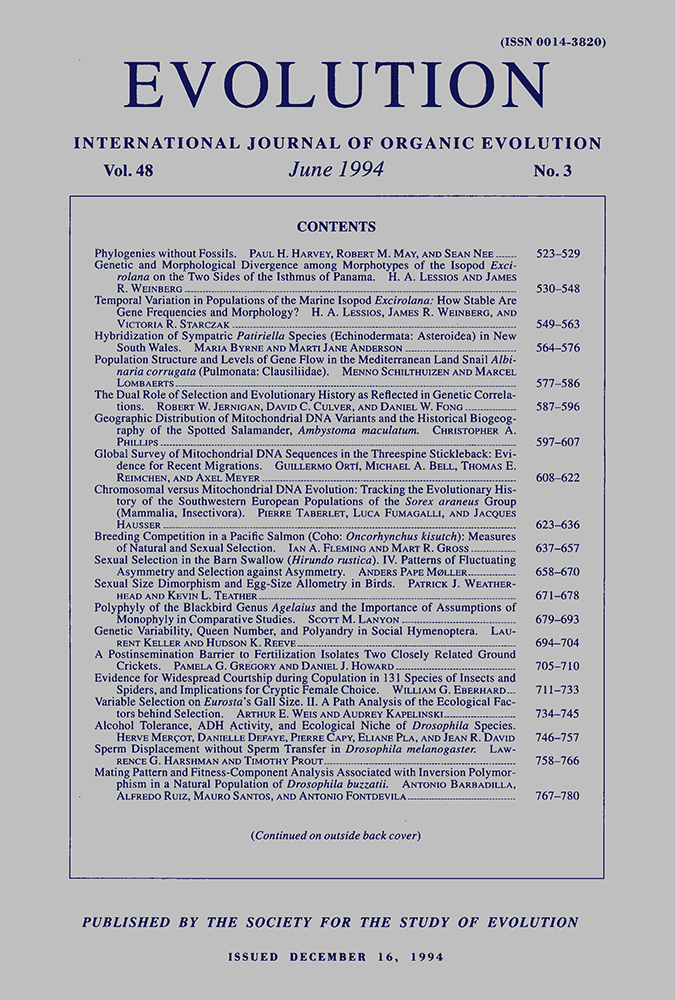ALCOHOL TOLERANCE, ADH ACTIVITY, AND ECOLOGICAL NICHE OF DROSOPHILA SPECIES
Abstract
In vitro alcohol dehydrogenase (ADH) activity was measured in adults of species belonging to Drosophila and to the related genus Zaprionus. Data were analyzed according to the known breeding sites and the level of ethanol tolerance of these species. Alcohol dehydrogenase activity was assayed with both ethanol (E) and isopropanol (I). Our results show a very broad range of activities among the 71 species investigated, the ratio of the highest value observed (D. melanogaster) to the lowest (D. pruinosa) being 65:1. A general positive correlation was found between the level of ADH activity and the capacity to detoxify ethanol. Nevertheless, many species show exceptions to this rule. Contrary to a logical expectation, adaptation to high alcoholic resources, which has been a recurrent evolutionary event, was not mediated by a more efficient use of ethanol, that is, an increase of the E/I ratio. This ratio seems to be quite variable according to the phylogeny and is especially low in the subgenus Sophophora as well as in Zaprionus. Alcohol tolerance clearly is related to the larval habitat of the species and shows that adaptation to alcoholic resources has been a major evolutionary challenge in drosophilids. This adaptation is not related to phylogeny, having occurred independently several times during the evolution of the group. Finally, it should be borne in mind that, besides metabolization and detoxification, other physiological processes such as nervous-system tolerance or ethanol excretion may be involved in ethanol tolerance, and such functions also should be investigated. Environmental ethanol, which is certainly a major ecological parameter for many drosophilids, has selected a diversity of physiological adaptations, all related to the Adh locus, but presumably much more complicated than was previously believed.




